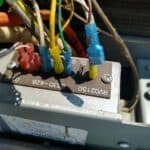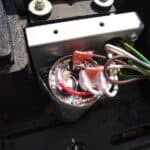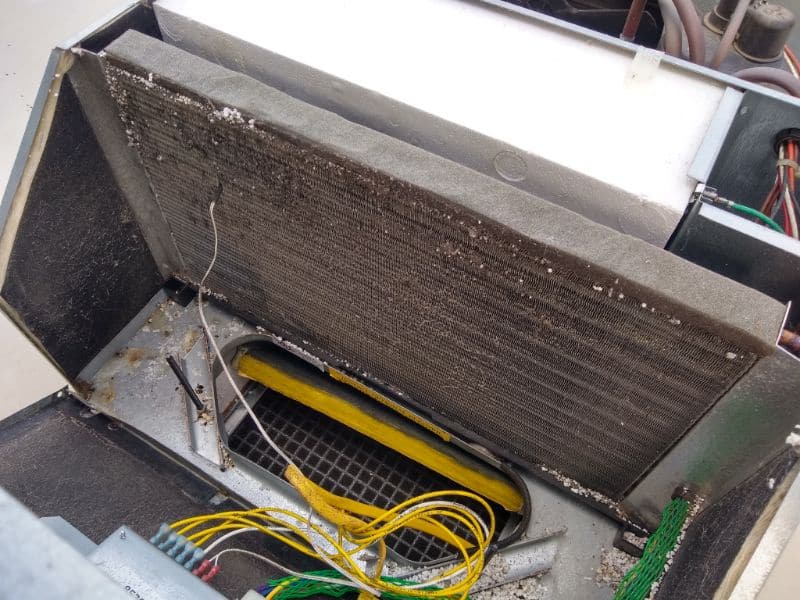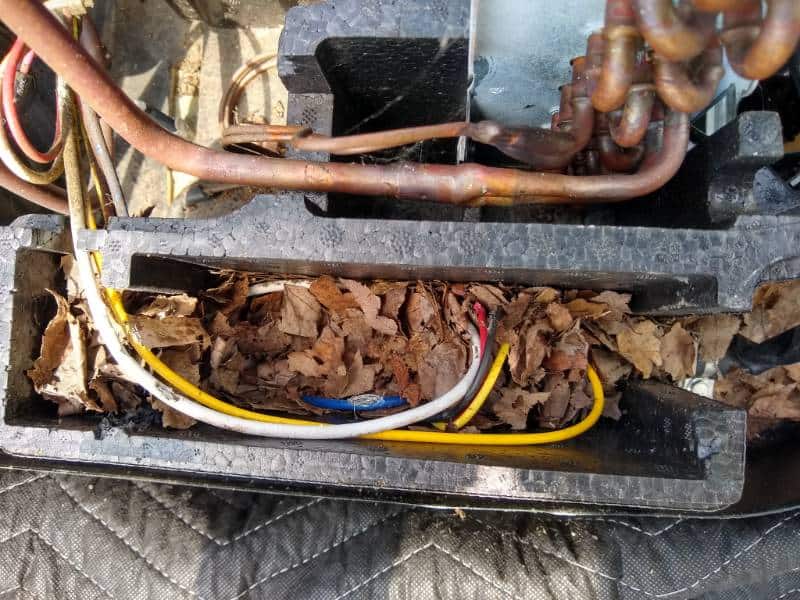Is your RV rooftop air conditioner not blowing cold air?
At the risk of being obnoxiously obvious, that’s not a good sign. Unlike your residential or automotive air conditioner, an RV air conditioner cannot be recharged. So you can’t just pump another can of Freon into the tubes and cross your fingers. No, it’s time to put on your thinking cap.
I’m going to ask you to grab a flashlight. Beyond that, all you need is a screwdriver to pull off some access panels and shrouds. I’m not going to ask you to whip out a multimeter or dust off a technical manual – this isn’t that kind of instructable.
Instead, I want to share some easy troubleshooting techniques that may help you avoid a trip to the RV dealership.
NOTE: This step-by-step article is for a certain symptom only: Your air conditioner is working as it should – EXCEPT that the air conditioner is blowing warm air. If it’s not blowing air at all, then this article will probably not help you.
RV Air Conditioner Blowing Warm Air: What’s NOT The Problem!

Don’t blame these usual suspects. They are probably not the ones you’re looking for (although there’s an exception to everything in the RV world!).
THERMOSTAT
If your air conditioner is correctly cycling through its fan-only speed settings, then your thermostat is … erm … probably not the problem. If you have a digital thermostat, it’s not very likely. But … if you have an analog thermostat (such as for an old single-zone Coleman-Mach A/C), then it’s possible one of the wires on the back has been disconnected. Gently remove the thermostat from the wall and look for disconnected or corroded wires.
FAN MOTOR AND CAPACITOR

If your air conditioner is blowing a sufficient and normal volume of air, then the fan motor (and its capacitor) isn’t likely the problem.
CIRCUIT BREAKER
If your air conditioner turns on AT ALL, then the panelboard circuit breaker isn’t the root cause. The fan and compressor run off the same circuit.
DUCTS
A collapsed duct or blocked vent can certainly decrease the amount of airflow, but it should still be cold air. In rare cases, a damaged duct in a fully ducted system could show up as warm air at the exit, such as if the cold air is escaping into your RV attic.
Easy Check #1: Clean Your Coils!

The #1, Numero Uno, first and foremost reason why your RV air conditioner isn’t blowing cool air is simply that it’s dirty.
A dirty air conditioner can’t do its job of moving heat from the inside to the outside. To do this, it relies on two heat exchangers – two sets of finned coils – that allow heat to pass in and out of the refrigerant. If those coils get dirty, then you’ve basically dressed your coils in a down parka – heat can’t get out!
Solution: Clean your coils. It’s that easy. You’ll be done within 30 minutes. Get on the roof, take off the air conditioner shroud, spray on A/C coil cleaner, and start scrubbing (carefully). There are many YouTube videos that will walk you through this process; here’s one of my favorites.
Oh, and while you’re cleaning your coils, you may as well replace or clean your air filters, too.
[VIDEO]
Easy Check #2: Defrost Your Coils!
Under certain conditions, the evaporator coils in your air conditioner may freeze up. That’s not a metaphor; they will literally become covered in ice. Ice, actually, is a pretty good insulator, so contrary to what you might think, the air passing through the ice won’t become very cold. In severe situations, the ice will literally fuse into an impenetrable Ice Castle straight outta Frozen.
If you’re lucky, then you just need to turn off your air conditioner and let it sit for a while, allowing the coils to defrost themselves. This is common if you’ve been running the air conditioner continuously in humid weather.
If you’re unlucky, then the frozen coils can be symptoms of a more serious sickness, such as a bad freeze sense, refrigerant leak, or blocked return airflow. That’s where the Easy DIY path ends and the RV Technician path begins.
Easy Check #3: Are You Sure It’s Not Working?
RV air conditioners are designed to pull air from inside the RV, blow it across the cooling coils, and return it to the interior. There is no air exchange between inside and outside; there’s only heat exchange. Whether you have ducted or direct vents doesn’t matter; all rooftop air conditioners work the same way.
A functioning RV air conditioner should cool the incoming air by 15-20 degrees Fahrenheit. The more humid the air, the less cooling you can expect, so don’t be surprised to see as low as 12 degrees on a muggy Florida afternoon!
Do you see the problem here? If the inside of the RV is superheated to 95 degrees, the “cool air” out of your air conditioner may only be 80-85 degrees! That’s still warm to the touch! It takes time to cool down an overheated RV. That’s why I wrote this guest post for RVTravel.com where I talk about the second-best thing you can do for your RV air conditioner: avoid heat gain!
You can use a cheap kitchen probe thermometer to check the temperature of the incoming and outgoing air, what we RV technicians call a “Delta T test.” After the A/C runs for 15-20 minutes, you should see 15-20 degrees Fahrenheit difference (up to 30 degrees in dry air, as low as 12 degrees in humid conditions). If you’re seeing 10 degrees difference or less, you probably have another, more serious problem.
>>> READ MORE: Here’s why most RVers prefer a fully ducted air conditioning system!
Easy Check #4: Do You Hear the “Kick”?

Most RV air conditioners are designed to turn on the compressor – the “heart” of the air conditioner that does all the work – after 1-2 minutes after start-up. When the compressor “kicks” on, you can usually hear the mechanical thump and the power draw-down from inside the RV. It pulls a lot of amps on startup, so you’ll hear it wind up from a dead start.
> If you DO NOT hear the “kick” of the compressor, then that’s bad news. That means your compressor is not turning on when it should. This could be a number of things:
- Stuck relay in control box
- Disconnected thermostat wiring
- Bad compressor capacitor
- Burned out compressor
- Corroded wire
- Broken PTCR
… Or a half-dozen other things. This where you either need some hefty DIY skills (not covered herein) or you need to call an RV service technician.
> If you DO hear the kick of the compressor … then that’s also bad news. Because the compressor is running … but you’re not getting cold air. Hopefully, the culprit is the aforementioned dirty coils. But if the coils are clean, the fan is blowing, and the compressor is kicking on … then that’s a classic indicator of low refrigerant = new air conditioner.
>>> READ MORE: Why You Can’t Recharge an RV Air Conditioner!
Easy Check #5: Get on the Roof!

At this point, the last DIY step is to lay eyes on the beast. You’d be amazed what you’d find just with a simple visual inspection. So get on the roof, remove the A/C shroud, remove the evaporator coil cover, and have your partner turn on the air conditioner. See what you can see.
- Is the motor spinning at full speed?
- Are any fan blades broken?
- Is there a mouse nest in the wiring?
- Are the condenser or evaporator fins damaged?
- Do you see yellow/green residue on the A/C pan? (leaking refrigerant)
If everything looks A-OK … then it’s time to call a service technician. Don’t go poking around in the innards without knowing what you’re doing. You can get severely shocked or injured.
Conclusion: What’s the Most Likely Cause of an RV Air Conditioner Not Cooling Down?
I will tell you that 3 times out of 4, the diagnosis of an RV air conditioner blowing warm air is either the best or the worst answer: Either the coils need to be cleaned, or the unit has lost its refrigerant and needs to be replaced. The other 25% of the time, I can usually save the air conditioner with a few replacement parts. Good luck!
Leave a Reply